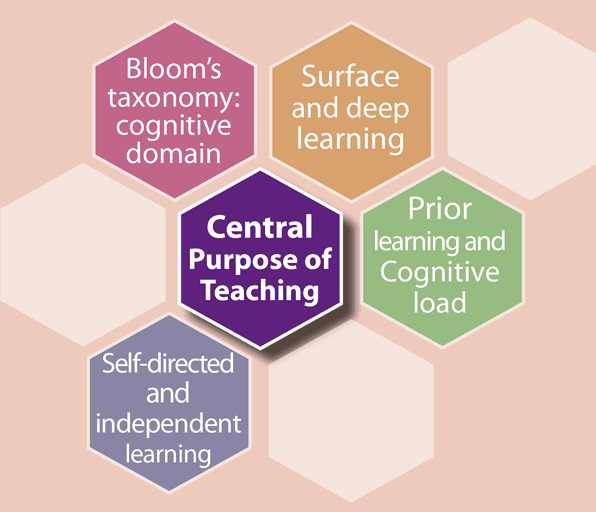Introduction
Problem-based Learning (PBL), as you will learn, is particularly well suited to interprofessional case-based discussions and learning 1. This CORAL Cell will help orient you to, and begin your preparation to, be an effective facilitator of iPBL.
Learning Objectives (what you can reasonably expect to learn in the next 15 minutes):
- Compare and contrast PBL with case-based learning
- Explain the important elements of PBL (and iPBL)
- Describe the process or steps followed in PBL.
To what extent are you now able to meet the above objectives? Please record your self-assessments. (1 is not at all and 5 is completely)
To get started, please take a few moments to consider your experiences learning from cases. What are the elements of case-based learning? How might PBL be different? Write your ideas out here or somewhere handy so you can refer back to them shortly:
Now proceed to the next page for the rest of this CORAL session on iPBL.
Interprofessional Problem-based Learning
Compare and contrast PBL with case-based learning
Case-based learning: generally in case-based learning, students learn from teachers or on their own (or some combination of those two) what they need to address a clinical or workplace situation. The teacher then presents a case and expects the students in groups, or on their own, to apply their knowledge and skills to the situation presented. Learn first, meet the case, then apply learning.
PBL: Everything in case-based learning takes place in PBL except first, before learning what they need, teachers present the students with the case, or parts of the case. Students then decide what they need to know to address the situation in the case, learn it, then bring that new knowledge to bear on the case. The case, introduced and explored early, becomes the imperative guiding and motivating the learning.
Important elements of PBL
- The problem*: Howard Barrows, one of the fathers of PBL, states that “Learners acquire and apply their knowledge and skills by managing authentic problems that they are likely to face in the workplace.”2 He defines it this way: “A problem exists whenever you are looking for a better way to accomplish something or whenever you would like to make an unacceptable situation acceptable. A problem occurs when you are faced with a number of alternatives to take and the best is not obvious, or possible, or you can’t think of a good alternative.”
- A systematic approach: Learners determine what they know about the problem/patient, what important pieces of information are missing, what further questions they should ask of the patient and of themselves, and what information they should research (generally called ‘learning issues’) to acquire the necessary information and validate or augment what they think they already know. The students direct their work on the problem based on their knowledge gaps, areas of interest, and, in interprofessional PBL, on their professional roles.
- The facilitator helps guide the group through the systematic approach to the problem at hand. Rather than giving information and demonstrating, the facilitator helps the group to be more self-directed and for members to learn on their own and from each other.
- Progressive disclosure: The problem details unfold in progressive stages over two or more group sessions simulating an authentic problem from the clinic or workplace. The group carefully considers new information in light of how it might lead to a resolution of the problem.
* A problem is essential to PBL, however, not every approach to learning and/or teaching that includes a problem is what we have here defined as Problem-based Learning (PBL).
Describe the process or steps followed in iPBL
- group process activity and interprofessional relationship building
- module/case objectives
- progressive disclosure of a problem with exploration/discussion/collaboration
- collaborative generation of hypotheses, group learning needs, and an approach to the problem
- Independently (or in pairs, sometimes) students search for the “missing” information needed to address the problem.
- learning with, from and about the other health professions represented in the iPBL group
Check for Understanding
Self-assessment
To what extent are you NOW able to meet the following objectives? (0 is not at all and 5 is completely)
To what extent WERE you able the day before beginning this CORAL Cell to meet the following objectives? (0 is not at all and 5 is completely)

Thank you for completing this CORAL Cell. We are interesting in improving this and other cells and would like to use your answers (anonymously of course) along with the following descriptive questions as part of our evaluation data.
Thanks again, and come back soon!
The CORAL Cell Team
References
1 McKee N, D’Eon M, Trinder K. Problem-based learning for inter-professional education: evidence from an inter-professional PBL module on palliative care. Canadian Medical Education Journal. 2013;4(1):e35.
2 Barrows HS, Wee KN. Principles & practice of aPBL. Southern Illinois University School of Medicine; 2010.
Additional Reading
D'Eon M. A blueprint for interprofessional learning. Journal of Interprofessional Care. 2005 May 1;19(sup1):49-59.
